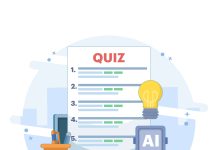At a recent conference, an attendee showed me her upcoming music video project—all generated with artificial intelligence (AI) tools. While that one isn’t out yet, this emerging type of music video has graphics generated by AI based on its lyrics, which are often AI-generated themselves.
The last year has seen an unprecedented explosion of AI creator tools:
- Image generators such as DALL-E and MidJourney became open to all, leading to a flurry of experimentation and generative art across the creative community.
- Image generators focused on faces, such as Lansa AI, can take a set of selfies and create original ones in both photorealistic and graphic styles.
- AI music and sound effects generators can now be created from a text prompt, such as “whistling with wind blowing.”
- AI-based video editing also is emerging. RunwayML, for instance, allows for automatic removal of objects and other advanced editing features with just a few clicks.
- Even 3D world generation is getting an AI boost, with developing tools such as Meta’s Builder Bot enabling users to effectively speak the world around them into existence.
The greatest rising AI star, however, is the Generative Pre-Trained Transformer (GPT) from Open AI. From only a simple a prompt or set of examples, GPT can generate original content, such as articles, realistic scripts (with stage directions), lyrics, and even storylines.
For example, by providing it with a set of characters, a plot outline, and a writing style, GPT can generate a complete story that is surprisingly coherent and engaging. This can be used to generate ideas or even complete creative works [Note: This paragraph was written by GPT itself].
Challenges
Of course, with all the excitement and hype, the emerging AI landscape is facing some challenges, such as ethical considerations. Is it fair, for instance, to enter an art contest with AI-created art? How ethical is it to use GPT as input (or even replacement for) for student assignments or professional work?
Copyright issues are also a concern. Prominent artist Greg Rutkowski, for example, has had his art in the training set of AI generators—and now he is being used as a style prompt in unsanctioned AI works.
While there is still a lot of complexity to navigate, large organizations such as Microsoft are already exploring ways to leverage AI tools for their users. In collaboration with Open AI, for instance, they recently released Designer, a tool enabling users to generate professionally designed flyers, social media posts, and presentation content from just a set of prompts.
Human-AI Teams
Despite challenges, AI will continue to accelerate rapidly and get more embedded in our creative processes, so how can Training leaders ride this wave as the future emerges?
As a first step, it is critical to try out these technologies to see how they work first-hand. This will hone the emerging professional skill of prompt engineering—the ability to write instructions for AI tools in a way that generates desired results.
Exploring the tools also will help Training professionals generate ideas and perhaps even use select outputs for their work, saving time and effort. AI-based imagery, for instance, can be used for presentations, eLearning graphics, and character design. AI-based text can support idea generation and content creation, such as course descriptions, scripts for scenarios and eLearning, and learning assessments.
Here are the most important (and easy) tools to start with:
- AI Imagery: DALL-E and MidJourney
- AI Design (you may need to get on the waiting list): Microsoft Designer
- AI Writing: GPT
As AI continues to advance, people increasingly will take the role of orchestrators or creative directors, using their prompt engineering expertise to maximize AI’s capabilities. Human-AI blended teams will lead to an era of unprecedented innovation and creative output.


